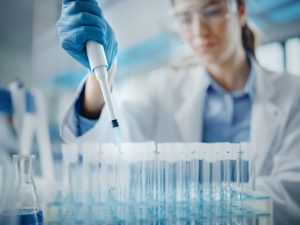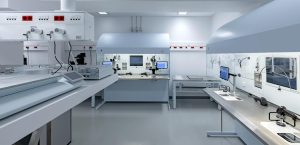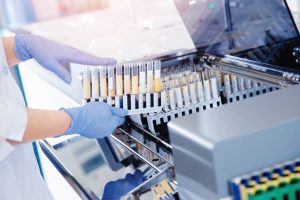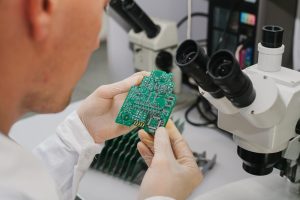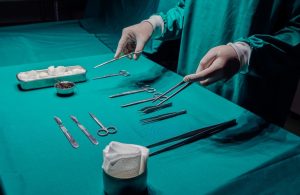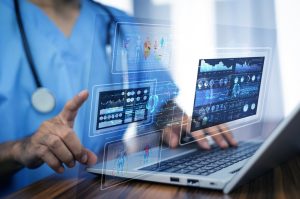Laboratory equipment forms the backbone of scientific research and experimentation, facilitating the accurate and efficient execution of various tests and procedures. From simple tools to sophisticated machinery, the range of laboratory equipment is vast and specialized. This blog aims to provide a detailed overview of the essential laboratory equipment, their functions, and their significance in the world of science.
Introduction to Laboratory Equipment
Laboratory equipment encompasses a wide variety of tools and devices used by scientists, researchers, and healthcare professionals. These instruments are designed to perform a multitude of tasks, including analysis, measurement, and data collection. The precision and reliability of laboratory equipment are crucial as they directly impact the outcomes of experiments and research studies.
Basic Laboratory Equipment
Beakers and Flasks
- Beakers: Cylindrical containers used for mixing, stirring, and heating chemicals. They come in various sizes and typically have a spout for easy pouring. Beakers are essential for many types of experiments, providing a convenient way to handle liquids.
- Flasks: These include Erlenmeyer flasks, volumetric flasks, and Florence flasks, each serving different purposes like mixing, measuring, and heating solutions. The Erlenmeyer flask, with its conical shape, is particularly useful for swirling liquids without risk of spillage.
Pipettes and Burettes
- Pipettes: Used to transfer precise volumes of liquid. They range from simple glass tubes to sophisticated electronic pipettes. Micropipettes are a specialized type used in molecular biology to handle very small volumes.
- Burettes: Graduated glass tubes used in titration to measure the volume of a liquid. They allow for the precise addition of liquids drop by drop, which is crucial in quantitative chemical analysis.
Test Tubes and Racks
- Test Tubes: Cylindrical glass tubes used to hold, mix, or heat small quantities of liquid or solid chemicals. They are a staple in any laboratory, used in a variety of experiments and tests.
- Test Tube Racks: Hold and organize test tubes to prevent them from tipping over. These racks are crucial for maintaining order and safety in the laboratory.
Microscopes
- Essential for magnifying objects that are too small to be seen with the naked eye. Types include optical microscopes, electron microscopes, and confocal microscopes. Optical microscopes are common in biology labs, while electron microscopes provide much higher magnification for detailed studies of cell structures.
Advanced Laboratory Equipment
Centrifuges
- Used to separate substances of different densities by spinning them at high speeds. Commonly used in biological and medical laboratories, centrifuges are essential for processes like blood separation and DNA extraction.
Spectrophotometers
- Measure the amount of light absorbed by a sample. Useful in determining the concentration of substances in a solution, spectrophotometers are widely used in chemistry and biochemistry labs for quantitative analysis.
Chromatography Systems
- Separate mixtures into their individual components. Includes gas chromatography (GC) and liquid chromatography (HPLC). These systems are vital in fields such as pharmacology and environmental science for analyzing complex mixtures.
PCR Machines
- Polymerase Chain Reaction (PCR) machines amplify DNA sequences, crucial in genetic research and diagnostics. PCR technology has revolutionized fields like genetics and forensic science by allowing for the rapid and precise duplication of DNA samples.
Autoclaves
- Sterilize equipment and media using high-pressure saturated steam. Essential in microbiology and medical labs to prevent contamination, autoclaves ensure that all equipment and materials are free from microbial life.
Safety Equipment
Fume Hoods
- Ventilated enclosures that protect users from inhaling hazardous fumes, vapors, or dust. Fume hoods are critical for maintaining a safe working environment, particularly when handling volatile or toxic chemicals.
Safety Showers and Eyewash Stations
- Provide immediate decontamination in case of exposure to harmful chemicals. These are essential safety features in any laboratory, ensuring quick response in case of accidental spills or splashes.
Gloves and Lab Coats
- Personal protective equipment (PPE) to prevent skin and clothing contamination. PPE is a fundamental part of lab safety protocols, protecting personnel from chemical, biological, and physical hazards.
Measuring and Analytical Instruments
Balances
- Precision instruments for measuring mass. Types include analytical balances and top-loading balances. Accurate mass measurement is crucial in all fields of science, from chemistry to pharmacology.
pH Meters
- Measure the acidity or alkalinity of a solution, crucial in chemistry and biology labs. Maintaining correct pH levels is essential for many chemical reactions and biological processes.
Thermometers
- Measure temperature with high accuracy. Digital and infrared thermometers are common in modern labs, providing quick and precise temperature readings.
Computing and Recording Equipment
Data Loggers
- Electronic devices that record data over time, often used in conjunction with sensors. Data loggers are essential for tracking environmental conditions, such as temperature and humidity, in real-time.
Laboratory Information Management Systems (LIMS)
- Software systems that manage samples, associated data, and laboratory workflows. LIMS improve efficiency and data integrity by automating data collection, storage, and analysis processes.
Computers and Software
- Integral for data analysis, simulation, and presentation of results. Modern laboratories rely heavily on computers to process and analyze vast amounts of data, ensuring accurate and reproducible results.
Maintenance and Calibration
Regular maintenance and calibration of laboratory equipment are vital to ensure accuracy and longevity. Proper care includes:
- Routine Cleaning: Prevents contamination and ensures the equipment functions correctly. Regular cleaning of glassware, surfaces, and instruments is essential to maintain a sterile and safe working environment.
- Calibration: Regular calibration checks maintain the precision of measuring instruments. Calibration ensures that instruments such as balances and pH meters provide accurate readings, which is crucial for reliable experimental results.
- Inspection and Repair: Early detection and fixing of any issues prevent downtime and costly repairs. Routine inspections help identify wear and tear or potential malfunctions, allowing for timely maintenance and preventing equipment failure during critical experiments.
Future Trends in Laboratory Equipment
The landscape of laboratory equipment is continuously evolving with advancements in technology. Some emerging trends include:
- Automation: Increased use of robots and automated systems to enhance efficiency and reduce human error. Automation streamlines repetitive tasks, freeing up researchers to focus on more complex aspects of their work.
- Miniaturization: Development of smaller, portable devices that perform complex analyses. Portable equipment allows for on-site testing and analysis, which is particularly useful in field research and remote locations.
- Integration with AI: Use of artificial intelligence to improve data analysis and predictive modeling. AI can enhance the accuracy and speed of data interpretation, leading to more robust scientific conclusions.
- Sustainable Practices: Focus on eco-friendly materials and energy-efficient devices. Laboratories are increasingly adopting sustainable practices to reduce their environmental impact, such as using energy-efficient equipment and minimizing waste.
Conclusion
Laboratory equipment plays a critical role in scientific discovery and innovation. From basic tools to cutting-edge machinery, each piece of equipment contributes to the accuracy and efficiency of research. Understanding the functions and proper use of these instruments is essential for anyone working in a laboratory setting. As technology continues to advance, the future promises even more sophisticated and efficient tools to support scientific endeavors.
Investing in high-quality laboratory equipment and maintaining it properly not only enhances the reliability of experimental results but also ensures the safety of laboratory personnel. As we move forward, the integration of advanced technologies and sustainable practices will further transform the way laboratories operate, opening new horizons for scientific exploration and discovery.


